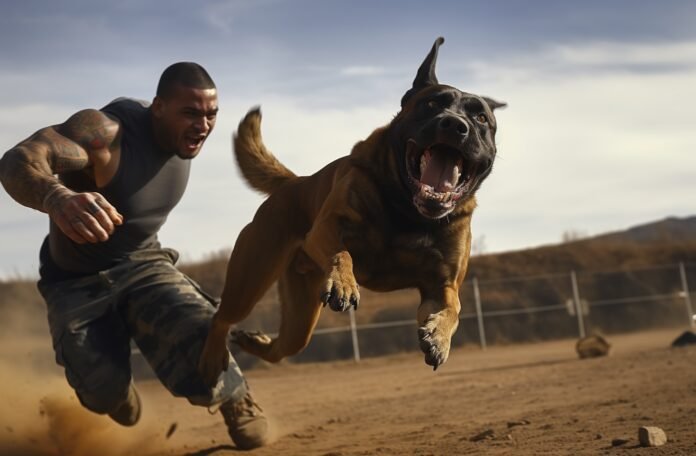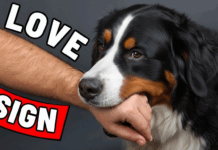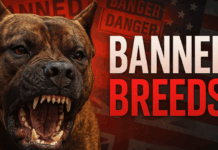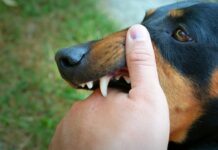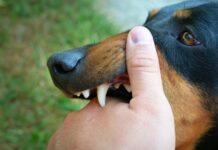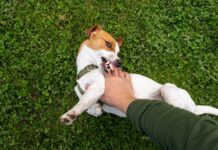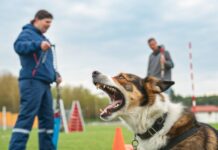Last Updated on July 15, 2023 by Dogs Vets
Fight or Flee? What to Do if a Dog Attacks?
Dealing with an aggressive dog can be a frightening experience. Understanding canine body language, effective prevention strategies, and what to do in case of an attack can help ensure your safety.
This article provides an in-depth guide on handling aggressive dog encounters, answering the critical question: should you fight or flee?
Understanding Canine Aggression
Understanding why dogs become aggressive can help us prevent an attack. It’s crucial to remember that aggression is usually a sign of fear, frustration, or a protective instinct in dogs.
Gaining insight into why dogs resort to aggression is key to effectively managing and potentially averting hostile encounters.

Canine aggression, although alarming, is not arbitrary. Instead, it is primarily a response to certain triggers deeply ingrained in a dog’s psyche or experience.
Remembering this, we can cultivate empathy and adopt a more informed, proactive approach to prevent an attack.
Let’s delve deeper into the prime instigators of aggression – fear, frustration, and protective instincts.
Fear-Induced Aggression
Contrary to what we might instinctively think, fear is one of the leading causes of aggression in dogs. When confronted with a perceived threat, a dog’s fight-or-flight instinct kicks in.
If escape isn’t an option, a dog may choose to fight, presenting what we perceive as aggression.
Fear in dogs can arise from a variety of situations, such as unfamiliar environments, sudden movements, unknown people or animals, loud noises, or past traumatic experiences.
Recognizing these triggers and providing a safe, reassuring environment for dogs can significantly decrease fear-induced aggression.
Frustration-Elicited Aggression
Commonly known as barrier frustration or redirected aggression, frustration-elicited aggression occurs when a dog is prevented from obtaining something it strongly desires.
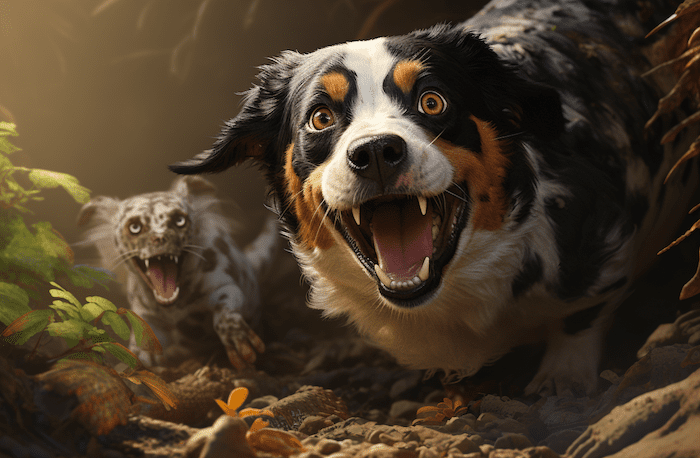
This could be the inability to reach a playmate, fetch a ball, or chase after a squirrel due to a leash or fence. The pent-up frustration may result in an aggressive outburst, often directed at the nearest individual or animal.
Managing this form of aggression involves identifying the sources of frustration and working on desensitization and counter-conditioning techniques, promoting healthier behavioral responses in dogs.
Protective and Territorial Aggression
Dogs, like their wolf ancestors, are pack animals with strong protective instincts towards their pack members and territory.
In a domestic setting, this ‘pack’ extends to their human family and home. Dogs may exhibit aggressive behavior when they perceive an intruder threatening their pack or invading their territory.
While protective instincts are hardwired and often appreciated in dogs, it’s essential to ensure these instincts don’t escalate to unwarranted aggression.
Proper socialization, obedience training, and consistent boundaries can help manage protective and territorial aggression.
Understanding these triggers of canine aggression helps us not only anticipate possible threats but also better cater to our dogs’ needs and well-being. As with humans, effective communication and empathy are at the heart of a harmonious relationship with our canine companions.
Identifying Warning Signs
Most dogs will show warning signs before resorting to aggression. These include growling, baring teeth, rigid body posture, and intense staring.
Preventing a Dog Attack
Prevention is the best course of action when it comes to dog attacks. Adopting certain strategies can help avoid a situation from escalating into an attack.

Avoiding Threatening Behaviors
Dogs may perceive certain human behaviors as threatening, triggering their defensive instincts. Avoid direct eye contact, sudden movements, and invading their personal space.
Reading Dog Body Language
Being able to interpret dog body language can help predict a potential attack. Raised fur, ears pinned back, and a low growl are all signs of an impending attack.
Use of Deterrents
Carrying deterrents like pepper spray or ultrasonic dog repellants can help ward off an aggressive dog.
What to Do During a Dog Attack
Despite your best prevention efforts, a dog attack can still occur. Knowing what to do during an attack can make a difference.
Stay Calm
In the face of an attack, maintaining your composure can prevent the situation from escalating. Running or screaming may trigger the dog’s predatory instincts.
Make Yourself Larger
Try to appear larger and more intimidating by standing tall and opening your coat or lifting a nearby object above your head.
Use a Barrier
If possible, place an object between you and the aggressive dog. A backpack, bike, or umbrella can be useful barriers.
Protect Vital Areas
In case the dog lunges, protect your face, chest, and throat. Use your forearm or a sturdy object to keep the dog’s mouth away from you.
Post-Attack Steps
After an attack, there are important steps to take to ensure your safety and hold the dog’s owner responsible.
Seek Medical Attention
Even minor dog bites can cause infection. Always seek medical attention promptly.
Report the Incident
Report the dog attack to local animal control authorities. Provide as much detail as possible about the dog and the circumstances of the attack.
Contact a Lawyer
In many jurisdictions, the dog’s owner is financially responsible for the damage caused by their dog. Contacting a lawyer can help you understand your rights and options.
Conclusion
While dog attacks can be a frightening prospect, understanding canine aggression, effective prevention strategies, and knowing what to do during and after an attack can significantly increase your chances of escaping unscathed.
Ultimately, the decision to fight or flee depends on the specific situation and the individual dog’s behavior. When in doubt, it’s always better to back away slowly and avoid escalating the situation.
FAQs
- What are the warning signs of a dog attack?
Growling, baring teeth, rigid body posture, and intense staring can all indicate an impending dog attack. - How can I prevent a dog attack?
Avoid threatening behaviors, understand dog body language, and carry deterrents to help prevent a dog attack. - What should I do during a dog attack?
Stay calm, make yourself appear larger, use a barrier, and protect your vital areas. - What steps should I take after a dog attack?
Seek medical attention, report the incident to local authorities, and consider contacting a lawyer. - Is the owner liable for a dog attack?
In many jurisdictions, the dog owner can be held financially responsible for damages resulting from a dog attack. - Can all dogs become aggressive?
While any dog can show aggression under certain circumstances, it’s usually a response to fear, frustration, or a protective instinct. - Should I fight back if a dog attacks?
In general, it’s best to avoid escalating the situation. Use a barrier, protect yourself, and back away slowly if possible.
Sources:
- ASPCA – Dog Aggression
- American Veterinary Medical Association – Dog Bite Prevention
- CDC – Preventing Dog Bites
Fact Check
We hope you enjoyed reading this article. What are your thoughts on the topic?
“At [Dogsvets.com], our goal is to bring you the most accurate and up-to-date information on all things pet-related.
If you have any additional insights or would like to advertise with us, don’t hesitate to get in touch.
We welcome your feedback and encourage you to share this article with others.”
